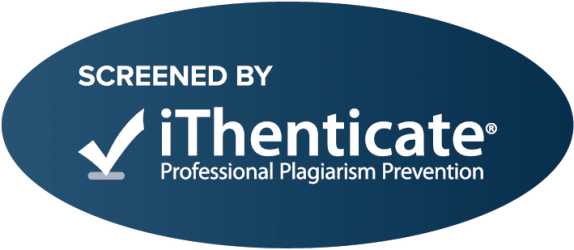Effectiveness of a Pivotal Response Training Programme in Joint Attention and Social Interaction of Kindergarten Children with Autism Spectrum Disorder
Keywords:
pivotal response, joint attention, social interaction, kindergarten children with autism spectrum disorderAbstract
The purpose of this study was to provide a training program based on pivotal response for children with autism spectrum disorder, which may affect positively on improving their joint attention and social interaction. Participants were six female children enrolled in public and private kindergartens and autism programs in Zulfi, Saudi Arabia for the second semester of the year 1435/1436 AH, who were diagnosed as having autism disorder. For data collection, Joint Attention Skills Inventory For Kindergarten Children with Autism Disorder, and Social Interaction Scale of Kindergarten Children with Autism Disorder were employed. A single group, pre-post and follow up design across participants was implemented. Six participants, data were obtained during pre, post-treatment, and at one-month follow-up. The study results showed that the pivotal response training intervention was effective in increasing joint attention skills (initiating and responding to signs, eye contact and follow the gaze of others, attract others' attention while playing, follow the instructions, Sharing feelings and emotional state and imitation) and social interaction (belonging to the group, communication, and cooperation) of all children participated in this study. Recommendations for further research were discussed.Downloads
References
REFERENCES
Abdullah, Adel Mohammed and Mourad, Ali Eissa. Contemporary Perspectives on autism Identification, assessment, problems, intervention, and instruction. Arees University Press, 2014.
Al Makhlouth, Fahid Hamad. All you should know about autism, Riyadh: King Fahad National Library 2004.
Al - Mughaloot, Fahd Hamad. All you should know about is autism. Riyadh: King Fahad National Library 2004.
Al Shakhseh, Abdul Aziz al-Sayed; Mohammed, Fatima Said; Shand, Samira Mohammed. “Proposed Training Program for the Development of Social Interaction in Children with Asperger Syndrome and Children with High Autism Disorder.” Journal of the Faculty of Education Ain Shams University,2015, 39 (2), 613 - 712.
Al-Wazzana, Talaat Hamza. National Project for Autism Research and Similar Growth Disorders in Saudi Children. Riyadh: Saudi Autism Society 2005.
American Psychiatric Association, Diagnostic and Statistical manual of mental disorders. Washington DC: APA 2013, 51.
Amin, Soha Ahmed."The effectiveness of an early intervention program to develop joint attention among autistic children and its impact on improving the level of their social interactions", Journal of Educational Sciences Institute of Educational Studies, 2008, Cairo University: Issue (3): 148-191.
Belind Medhuret, Joyne Bersford. "TOMAS Training: An Early Intervention for Children with an Autistic Spectrum Disorders”, Educational Psychology in Practice, 2007, 23 (11): 1-17.
Boucher, Signe Marie, Joint Attention, imitation, and repetitive behaviors as Predictors of autism and expressive language ability in early childhood. PhD. The Faculty of the University of North Caroline at Chapel Hill, 2007.
Centers for Disease Control and Prevention. Autism Spectrum Disorder (ASD): Data & Statistics. https://www.cdc.gov/ncbddd/autism/data.html. (Accessed 24th March 2017)
Connie Kasari and Stephanny Freeman, and Tanya Paparella. "Joint Attention and Symbolic Play in young Child-ren With Autism: A Randomized Controlled Intervention Study", Journal of Psychology and Psychiatry, 2006 47(6):611-620.
Conroy, Maureen and Brian, Boyd; Jennifer Asmus & Danielle Madera. "A functional approach for ameliorating social skills deficit in young children with autism spectrum disorders". Infants & Young Children, 2007 20 (3): 242 – 254.
Donna S Murray and Nancy A. Creaghead, Patricia Manning-Courtney, Jo-Anne Prendeville. "The Relationship between Joint Attention and Language in Children with Autism Spectrum Disorders", Focus on Autism and Other Developmental Disabilities, 2008 23(1): 5-1.
Feldman Klein, Eileen and Rosy Matos. "Training paraprofessionals to facilitate social interactions between children with autism and their typically developing peers. Journal of Positive Behavior Interventions, 2013 15(3): 169-179.
Gomez, Tina Rovito. The Effect of Teaching Attending to a Face on Joint Attention Skills in Children with an Autism Spectrum Disorder. PhD. The City University of New York, 2010.
Humphries, Tony. "Effectiveness of pivotal response training as a behavioral intervention for young children with autism spectrum disorders." Bridges: Practice-Based Research Syntheses, 2003 2(4):1–9.
Hurwitz, Sarah and Linda Watson. "Joint attention revisited: Finding strengths among children with autism". Autism 2016 20 (5): 538–550.
Ibanez, Lisa V. Developmental trajectories of attention and their impact on language and severity in the infant siblings of children with an Autism Spectrum Disorder. Ph.D., University of Miami 2010.
Jamison, Christopher B. Effects of a Social Communication Intervention for Promoting Social Competence through Play in Young Children with Disabilities. Ph.D. University of Virginia 2011.
Jones, Emily and Edward G. Carr and Kathleen M Feeley. "Multiple effects of joint attention intervention for children with autism."Behavior Modification, 2006 (30): 782-834.
Kamil, Omeima Mustafa. “The impact of joint attention training on improving social skills and verbal communication in children with high-functioning autism disorder.” Journal of the Institute of Higher Studies for Children, 2017 20(74): 99-108.
Kasari Connie, Gulsrud Amanda, Wong Connie, Kwon S, Locke Jill J. "Randomized controlled caregiver mediated joint engagement intervention for toddlers with autism.” Journal of Autism and Developmental Disorders, 2010 40(9):1045–1056.
Kasari, Connie and Tanya Paparella, Freeman, Stephanny, Jahromi, Laudan B. "Language outcomes in autism: Randomized comparison of joint attention and play interventions". Journal of Consulting and Clinical Psychology, 2008 (76): 125-137.
Khattab, Mohammed Ahmed. The psychology of the defiant child, its definition, classification, symptoms, diagnosis, and causes. Therapeutic intervention, Amman: House of Culture 2005.
Koegel, Robert and Lynn Koegel. Pivotal Response Treatments for Autism: Communication, social and academic development. Baltimore: Brookes Publishing 2006.
Koegel, Lynn, Matos-Freeden, R., Lang, R., & Koegel, Robert. “Interventions for children with autism spectrum disorders in inclusive school settings.” Cognitive and Behavioral Practice, 18(3): 421-588.
Luckevich, Dian, Computer Assisted Instruction for Teaching Vocabulary to a Child with Autism. Ph. D. Nova Southeastern University 2008.
Mourad Ali Eissa Saad. "The effectiveness of a joint attention training program on improving communication skills of children with autism spectrum disorder." Journal of Psycho-Educational Sciences, 2015 4(3): 3-12.
Mourad Ali Eissa Saad. "A Systematic Review of Autism Spectrum Disorder in Children and Adolescents: Social Deficits and Intervention." Journal of Psycho- Educational Sciences, 2017 6(2): 12-22.
Mourad Ali Eissa Saad. “The effectiveness of a life skills training based on the response to intervention model on improving functional communication skills in children with autism." Journal of Psycho-Educational Sciences, 2018 7(3): 56-61.
Nefdt, Nicolette and Koegel, Robert, Singer, George,Gerber, Michael. "The use of a self-directed learning program to provide introductory training in pivotal response treatment to parents of children with autism". Journal of Positive Behavior Intervention, 2010 12(1): 23-32.
Reitman Michelle Renee. Effectiveness of Music Therapy Interventions on Joint Attention in Children Diagnosed with Autism: A Pilot Study. Psy D., Carlo Albizu University 2005.
Rogers Sally and Geri Dawson. Play and engagement in early autism: the early START Denver model. New York: Guilford: 2009.
Siklos, Susan and Kimberly Kerns. "Assessing Need for Social Support in Parents of Children with Autism and Down Syndrome." Journal of Autism and Developmental Disorders,2006 (36): 921 – 933.
Smith, Isabel and Robert Koegel, Koegel, Lynn, Openden, D.A., Fossum, K.L., Bryson, S.E. "Effectiveness of a novel community-based early intervention model for children with autistic spectrum disorder". American Journal on Intellectual and Developmental Disabilities, 2010 115(6): 504-523.
Sullivan, Michele G. “Sample Screen to Detect Toddlers at Risk of Autism: Check, Rolling Painting, Joint Attention.” Family Practice News, 2007 34(8): 91.
Thorp, Danielle M. and Stahmer, Aubyn, Schreibman, Laura "Effects of sociodramatic play training on children with autism." Journal of Autism and Developmental Disorders, 1995 (25): 265-282.
Weiss, Mary. Social skills. an elusive target. Organization for Autism Research. The Best of The Oracle. A compilation of Articles from 2002 – 2007. https://researchautism. org/social-skills-an-elusive-target (Accessed 10th May 2019).
Zeiton, Kamal Abdel Hamid. Teaching people with special needs. Cairo: The World of Books 2003.
Additional Files
Published
How to Cite
Issue
Section
License

This work is licensed under a Creative Commons Attribution-NonCommercial-NoDerivatives 4.0 International License.










